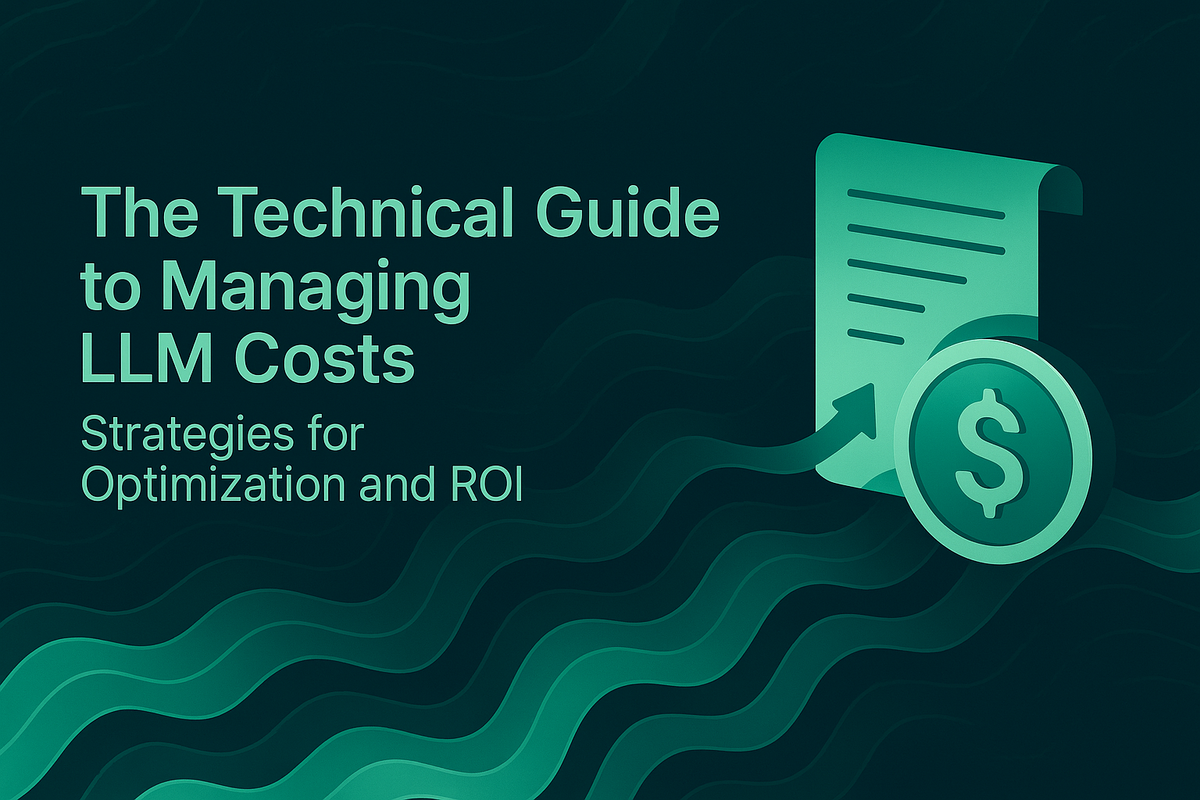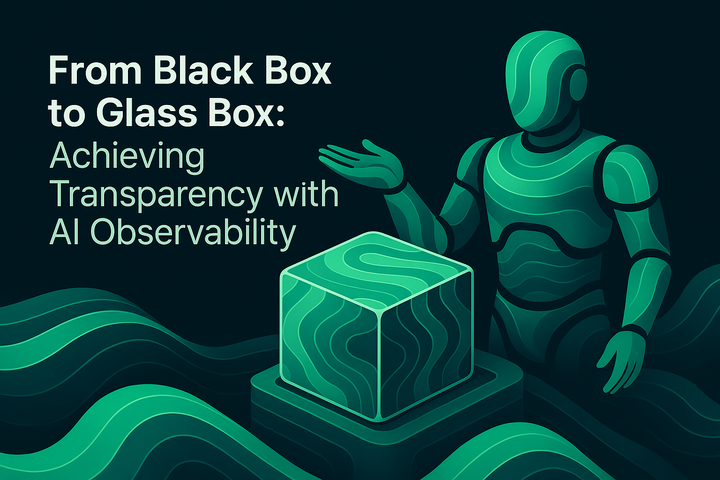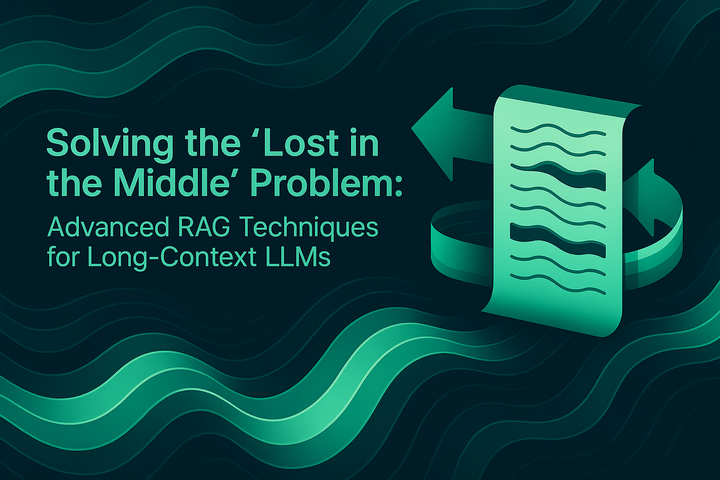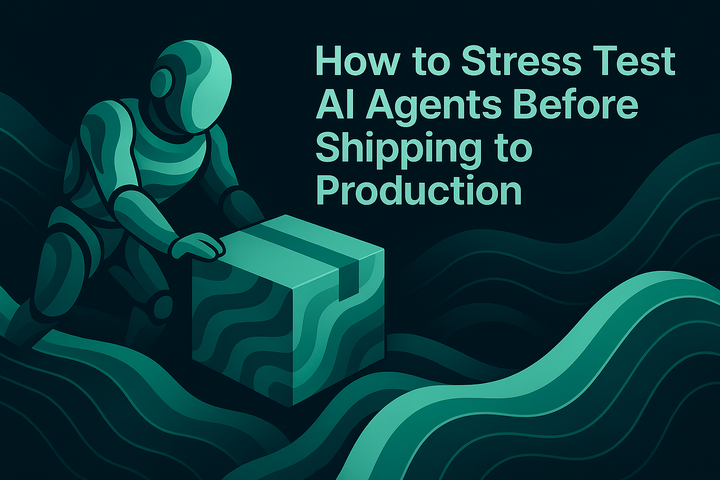The Technical Guide to Managing LLM Costs: Strategies for Optimization and ROI

LLM costs have become a critical concern for engineering teams deploying AI applications at scale. In 2025, API pricing ranges from $0.25 to $15 per million input tokens and $1.25 to $75 per million output tokens, creating significant budget variability depending on model selection and usage patterns. Organizations processing millions of requests daily face monthly bills that can quickly escalate from thousands to hundreds of thousands of dollars without proper cost management strategies.
This guide provides technical approaches to optimize LLM costs while maintaining application quality. You will learn how to analyze cost drivers, implement routing strategies, leverage caching mechanisms, and establish monitoring frameworks that prevent budget overruns in production.
Understanding LLM Cost Components
LLM API pricing operates on usage-based structures where costs directly correlate with consumption metrics such as tokens processed, requests made, or compute time utilized. This consumption model differs fundamentally from traditional software licensing, requiring teams to understand granular cost components.
Token-Based Pricing Models
Token-based billing calculates costs based on the number of tokens processed in both input prompts and output completions, with approximately 1,000 tokens equaling about 750 words in English. This pricing structure creates two distinct cost categories that teams must optimize independently.
Input tokens represent the prompt text sent to the model, including system instructions, few-shot examples, and user queries. Output tokens comprise the model's generated response. Output tokens typically cost significantly more than input tokens, often 3-5x higher per token depending on the provider and model tier.
Context window size directly impacts costs. Models with larger context windows enable processing more information in a single request but increase token consumption. Claude 3 and GPT-4.1 support up to 200,000 tokens, while Gemini 1.5 Pro offers 1 million token context windows, allowing teams to trade off between context capacity and cost efficiency.
Provider and Model Pricing Variations
Cost-focused models like GPT-4.1 Nano start at $0.40 per million input tokens, while premium models like Claude Opus 4 reach $15 per million tokens. This 37x price differential reflects capability variations, but many applications achieve acceptable performance with mid-tier models at significantly lower costs.
Provider selection impacts total cost beyond per-token pricing. Some providers offer batch processing discounts, cached input pricing, or volume commitments that reduce effective rates. Teams must evaluate these pricing structures against usage patterns to identify optimal provider configurations.
Strategic Approaches to Cost Optimization
Effective cost management requires systematic analysis of application requirements and strategic model selection rather than defaulting to the most capable model for all use cases.
Model Selection and Routing
Implementing intelligent model routing enables applications to dynamically select models based on request complexity and cost constraints. Simple queries that require factual retrieval or basic summarization perform adequately on smaller models, while complex reasoning or creative generation tasks benefit from premium models.
An AI gateway provides the infrastructure to implement routing logic without application code changes. By analyzing request characteristics such as prompt length, task type, or user tier, routing algorithms direct traffic to cost-appropriate models while maintaining quality thresholds.
Consider a customer support application processing 10 million tokens daily. Routing 70% of straightforward queries to a model costing $0.50 per million tokens and 30% of complex issues to a $5 per million token model yields an effective rate of $1.85 per million tokens compared to $5 if all traffic used the premium model, a 63% cost reduction.
Prompt Engineering for Token Efficiency
Prompt engineering directly impacts token consumption through instruction design and example selection. Verbose prompts with redundant instructions or excessive few-shot examples inflate input token counts without proportional quality improvements.
Systematic prompt optimization involves measuring baseline performance, iteratively removing unnecessary tokens, and validating that quality metrics remain stable. Teams should establish token budgets per request type and design prompts that achieve objectives within those constraints.
Many teams achieve 6-10% cost savings through prompt compression alone by eliminating redundant instructions, consolidating examples, and using more concise language while maintaining output quality.
Prompt versioning enables controlled rollouts of optimized prompts with rollback capabilities if quality regressions occur. Version management ensures cost optimizations do not compromise application reliability.
Technical Implementation Strategies
Production deployments require infrastructure that balances cost optimization with performance and reliability requirements.
Implementing Semantic Caching
Semantic caching reduces costs by storing and reusing responses for similar queries rather than processing identical or near-identical requests multiple times. Unlike traditional cache keys based on exact string matching, semantic caching uses embedding similarity to identify functionally equivalent queries with different phrasing.
A semantic cache implementation calculates embeddings for incoming prompts, compares them against cached embeddings using cosine similarity, and returns cached responses when similarity exceeds a configured threshold. This approach handles query variations like "What is your return policy?" and "How do I return an item?" as cache hits.
Cache hit rates depend on query distribution and similarity thresholds. Applications with repetitive query patterns (such as FAQ chatbots or documentation assistants) achieve cache hit rates of 40-60%, translating directly to proportional cost reductions on cached requests.
Load Balancing and Failover
Distributing requests across multiple API keys or providers through load balancing prevents rate limit throttling while enabling cost arbitrage across providers. When multiple providers offer similar models, load balancers can route based on real-time pricing, availability, or performance metrics.
Automatic failover ensures availability when primary providers experience outages or rate limits, but also enables cost optimization by maintaining backup providers that offer lower pricing for acceptable quality degradation scenarios.
Configuration should specify fallback chains with explicit quality and cost thresholds. For example, a primary model at $5 per million tokens might fail over to a $2 per million token alternative when availability drops or costs exceed budget thresholds for lower-priority requests.
Request Batching and Asynchronous Processing
Batch API processing offers up to 50% cost discounts from providers like Claude and OpenAI for workloads that tolerate higher latency. Applications with background processing requirements (such as content moderation, data enrichment, or analytics)should route these workloads to batch endpoints rather than synchronous APIs.
Implementing batch processing requires request queuing, job management, and result retrieval mechanisms. Teams must balance batch size, processing frequency, and latency requirements to maximize discount utilization while meeting service level objectives.
Measuring ROI and Cost Efficiency
Establishing metrics that connect LLM costs to business outcomes enables data-driven optimization decisions and prevents arbitrary cost cutting that degrades user experience.
Cost per Successful Interaction
Raw token costs provide incomplete visibility into application economics. Cost per successful interaction incorporates quality metrics by only counting interactions that meet defined success criteria, such as user satisfaction scores, task completion, or positive feedback.
This metric reveals scenarios where higher per-token costs actually improve ROI. A premium model costing 3x more per token but achieving 40% better task completion rates delivers superior cost efficiency at 2.1x cost per successful outcome compared to the cheaper alternative.
Tracking cost per successful interaction requires integrating LLM observability with business metrics. Production monitoring should capture token usage, costs, and quality signals for every request, enabling aggregation at various dimensions.
Budget Allocation and Tracking
Hierarchical budget management enables organizations to allocate costs across teams, applications, or customer segments with granular controls. Virtual keys assigned to specific contexts track spending against budgets and trigger alerts or throttling when thresholds are approached.
Implementing budget controls requires mapping application structure to cost allocation categories. A multi-tenant SaaS application might assign budgets per customer tier, implementing different rate limits or model routing based on subscription levels to align costs with revenue.
Cost Attribution for Multi-Agent Systems
Complex applications with multiple agents or processing stages require agent-level cost tracking to identify optimization opportunities. Each agent's token consumption, model selection, and contribution to task completion should be measured independently.
Agent monitoring provides distributed tracing that attributes costs to specific agents within workflows. This visibility reveals whether expensive research agents add proportional value compared to synthesis agents, enabling targeted optimization of high-cost, low-value components.
Production Monitoring and Continuous Optimization
Cost optimization is an ongoing process requiring production visibility and systematic evaluation rather than one-time configuration changes.
Real-Time Cost Monitoring
AI monitoring dashboards should display real-time cost metrics alongside performance and quality indicators. Key metrics include:
- Hourly and daily spend trends - Identify cost spikes that indicate configuration issues or usage anomalies
- Cost per model and provider - Track spending distribution to validate routing and failover decisions
- Token consumption patterns - Monitor input and output token ratios to detect prompt bloat or excessive generation
- Cache hit rates - Measure caching effectiveness and identify opportunities for cache warming
Alerting thresholds should trigger notifications when costs deviate from expected baselines, enabling rapid investigation before minor issues compound into significant budget overruns.
Evaluating Cost-Quality Tradeoffs
AI evaluation frameworks measure whether cost optimizations maintain acceptable quality levels. Before deploying model changes, routing updates, or prompt modifications, teams should run evaluations comparing new configurations against quality baselines.
Evaluation datasets should represent production query distributions and include edge cases where quality degradation might occur. Statistical evaluators measure objective metrics like accuracy or completion rates, while LLM-as-a-judge evaluators assess subjective qualities like helpfulness or coherence.
Teams should establish quality baselines before deploying cost optimizations to ensure new configurations maintain or improve quality metrics. Regression tests prevent scenarios where cost reductions create downstream support costs that exceed savings.
Continuous Prompt Optimization
Prompt management workflows enable continuous optimization through A/B testing and gradual rollouts. Teams should regularly evaluate prompt variants that reduce token consumption while tracking impact on quality metrics.
Experimentation platforms facilitate comparing prompt versions across cost, latency, and quality dimensions. Winning variants roll out incrementally with monitoring to validate production performance matches evaluation results.
Leveraging Gateway Infrastructure for Cost Control
Implementing cost optimization strategies requires infrastructure that provides routing, caching, monitoring, and governance capabilities without adding complexity to application code.
An LLM gateway centralizes these capabilities, enabling teams to implement sophisticated cost management through configuration rather than application changes. Key gateway capabilities for cost optimization include:
- Unified provider interface - Switch between providers for cost arbitrage without code modifications
- Intelligent routing - Direct requests to cost-appropriate models based on configurable rules
- Semantic caching - Reduce redundant processing through similarity-based response reuse
- Budget enforcement - Implement hierarchical spending limits with automatic throttling
- Cost attribution - Track spending across teams, applications, or customers
- Prometheus metrics - Export cost and usage data for visualization and alerting
Gateway-based architectures separate optimization logic from application logic, allowing infrastructure teams to implement cost controls and routing strategies that benefit all applications without coordinating code changes across multiple services.
Best Practices for Long-Term Cost Management
Sustainable cost optimization requires organizational practices and technical controls that prevent gradual cost creep as applications evolve.
Establish cost ownership - Assign clear responsibility for LLM spending to specific teams with budget authority and optimization accountability.
Implement cost allocation - Track spending at granular levels to identify high-cost features or user segments that warrant optimization focus.
Regular cost reviews - Schedule periodic analysis of cost trends, model utilization, and optimization opportunities rather than reactive responses to budget overruns.
Quality-cost tradeoff policies - Define acceptable quality degradation thresholds for different application components to guide optimization decisions.
Evaluation before deployment - Require evaluation runs demonstrating maintained quality for all changes affecting model selection, routing, or prompts.
Documentation of optimization decisions - Record rationale for model selection and routing configurations to prevent regressions during future changes.
Continuous monitoring - Maintain observability dashboards that surface cost anomalies and optimization opportunities in real-time.
Conclusion
Managing LLM costs effectively requires combining strategic model selection, technical optimization implementations, and continuous monitoring frameworks. Organizations that establish systematic cost management practices achieve 40-60% cost reductions while maintaining or improving application quality.
The approaches outlined in this guide (intelligent routing, semantic caching, prompt optimization, and comprehensive monitoring) provide a foundation for sustainable cost efficiency. However, implementing these strategies requires infrastructure that centralizes optimization capabilities without increasing application complexity.
Ready to optimize your LLM costs? Book a demo to see how Maxim's gateway and observability platform helps teams reduce costs while maintaining quality, or start your free trial to implement cost controls in your production applications today.


